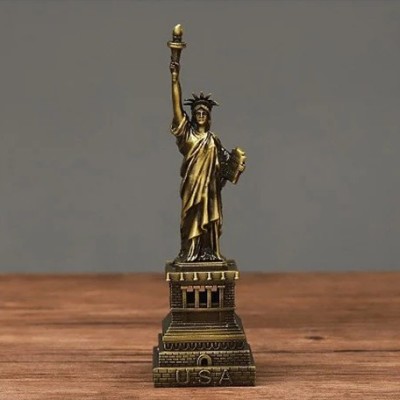
homesteading.com
Ditch Your Store-Bought Sprays for These Homemade Cleaning Products
Modern cleaning aisles are packed with brightly colored bottles promising to kill 99.9% of germs. Flip one over, though, and you’re met with a wall of ingredients most folks can’t pronounce. Many of those chemicals contribute to indoor air pollution and can irritate skin, eyes, and lungs of kids and pets. Alternatively, Homemade cleaning products offer a safer and more affordable alternative. Made with simple ingredients like vinegar, baking soda, and essential oils, they can clean just as effectively as store-bought versions without the unwanted side effects. You control what goes into them, which means more transparency and fewer toxins in your home.
7 Basic Ingredients for Natural Cleaning
The following seven ingredients form the backbone of most natural cleaning routines. They’re easy to find and reliable enough to handle the majority of household messes. Instead of filling a cabinet with single-use products, you can mix and match these staples to clean nearly every surface in your home.
If you’re starting to replace commercial cleaners, this short list will take you surprisingly far.
White Vinegar: Cuts grease and freshens surfaces without leaving residue.
Baking Soda: Scrubs gently and neutralizes unpleasant smells.
Castile Soap: A liquid soap made from vegetable oils that works on everything from dishes to floors.
Essential Oils: Add natural fragrance and offer some antimicrobial support, especially lemon and tea tree.
Rubbing Alcohol: Evaporates quickly and disinfects high-touch areas like doorknobs and light switches.
Cornstarch: Keeps glass sprays from streaking as they dry.
Citric Acid or Lemon Juice: Breaks down hard water buildup and soap residue.
Make Your Own Natural Cleaners at Home
Each of the recipes below is designed for a particular task. Some are better for daily surface cleaning while others handle buildup or freshen soft materials.
All-Purpose Cleaner
This spray handles the kind of mess that shows up on counters, sinks, and appliance handles. It works well in high-use areas where dirt builds up gradually. The scent will depend on which oil you choose, but the formula itself stays reliable.
Ingredients
1 cup distilled white vinegar
1 cup water
10 to 15 drops essential oil (lavender, lemon, or tea tree)
Instructions
Combine the ingredients in a spray bottle.
Shake before each use.
Spray on the surface and wipe with a clean cloth.
Do not use on stone surfaces like granite or marble, as vinegar may cause damage over time.
Baking Soda Scrub Paste
When surfaces collect grime that spray bottles can’t touch, a scrub paste helps. It’s thick enough to stick and gentle enough not to scratch. This one works especially well on tubs and inside the oven.
Ingredients
½ cup baking soda
1 tablespoon castile soap
A few drops essential oil
Water (enough to form a paste)
Instructions
Mix baking soda and castile soap together.
Add water slowly until the texture thickens into a paste.
Apply with a sponge or cloth.
Scrub the area, then rinse well.
Glass and Mirror Cleaner
Residue on glass is often from the cleaner itself, so be mindful when cleaning glasses. This version dries clean without creating fog or streaks. It’s best used on windows, mirrors, and anything with a reflective finish.
Ingredients
2 cups water
2 tablespoons white vinegar
2 tablespoons rubbing alcohol
1 tablespoon cornstarch
5 drops lemon essential oil (optional)
Instructions
Add everything to a spray bottle.
Shake well before each use to distribute the cornstarch.
Spray on glass and wipe with a lint-free cloth or newspaper.
Toilet Bowl Bombs
This is a low-effort way to keep the toilet fresh between full cleanings. The fizzing action helps lift mild buildup on contact. It’s also easy to make in batches ahead of time.
Ingredients
1 cup baking soda
¼ cup citric acid
1 tablespoon water
20 drops tea tree essential oil
Silicone mold or small spoon (for shaping)
Instructions
Combine dry ingredients.
Add water and essential oil slowly while stirring.
Press the mixture into molds or shape into small rounds.
Let dry for 6 hours or overnight.
To use, drop one into the bowl and scrub after it dissolves.
Fabric Freshener Spray
Fabrics tend to absorb and retain odors, unlike hard surfaces, which don’t hold smells as easily. This mist helps reduce those lingering odors without relying on synthetic fragrances. It’s safe for use on upholstery, though spot testing is still a smart idea.
Ingredients
1 cup distilled water
½ cup vodka or witch hazel
10 to 15 drops essential oil (lavender, eucalyptus, or cedarwood work well)
Instructions
Pour all ingredients into a spray bottle and shake.
Lightly mist fabrics as needed.
Always test on a small area first to check for discoloration.
Know What to Expect From Natural Cleaners
Homemade cleaners can take care of most day-to-day messes, but they aren’t meant to do everything. They work best on surfaces that don’t require full disinfecting and in homes that don’t rely on chemical-level sanitizing. If you’re cleaning up after raw meat or handling mold, it’s worth looking into stronger options.
Natural products still get results. Vinegar and alcohol have documented antimicrobial properties. Baking soda acts as a mild abrasive and helps remove odors. When used properly, these ingredients can handle the majority of everyday cleaning tasks.
For better results, keep a few basics in mind:
Let the cleaner sit on the surface for at least a minute before wiping
Use warm or hot water when possible to help lift residue
Choose tools that suit the job (like microfiber cloths or stiff-bristle brushes)
Don’t expect a single recipe to cover every situation
For a science-based breakdown of how ingredients like vinegar and alcohol perform against bacteria, the National Library of Medicine offers a helpful overview of natural disinfectants and household sanitation.
Make Room for Homemade Cleaning Products into Your Shelf
Homemade cleaning products let you tidy up using simpler ingredients, often with fewer harsh additives than store-bought options. It’s not about doing everything at once. Starting with just one DIY cleaner can make a difference.
Try one recipe and see how it works in your space. If it helps, keep using it. If not, adjust it to fit your needs. Cleaning should feel like taking care of your home, and not like a chore.
If you’ve already started making your own, share what’s been working. Your experience could help someone else get started with confidence.
FAQs
What surfaces should I avoid when using vinegar?
Avoid using vinegar on natural stone like granite, marble, or slate. It can damage the sealant and dull the finish over time.
Do I need to refrigerate homemade cleaners?
No. Most vinegar- or alcohol-based cleaners are shelf-stable. Just store them in a cool, dry place and shake before each use.
How long do these cleaners stay effective?
Most will last a few weeks to several months, depending on the ingredients. Use glass containers for essential oil blends to extend shelf life.
Can I use these around pets?
Yes, with a few precautions. Skip tea tree oil in homes with cats. Always rinse areas that pets may lick or walk across.
Will these kill germs and viruses?
They’ll handle everyday germs, but not all viruses or bacteria. For disinfecting high-risk areas, use alcohol above 70% concentration or an EPA-approved disinfectant.










